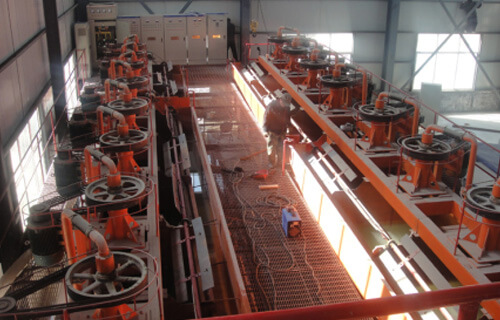
 Chat With Us
Chat With Us
 Leave Message
Leave Message
The beneficiation process of molybdenum ore can be applied to single molybdenum ore or refractory molybdenum ore with complex ore properties, closely intergrowth with sulphide minerals and fine particle size. Common are single molybdenum ore, copper molybdenum ore, tungsten molybdenum ore and molybdenum bismuth ore.
From the point of view of some molybdenum concentrators in China’s non-ferrous system, the grade of treated raw ore varies greatly, with a high grade of more than 0.3%, a low grade of less than 0.1%, and some of them are only 0.02%. The real recovery rate of molybdenum processing equipment is over 80%. The concentrate grade is 45%-54%, the tailings grade is about 0.02%, some tailing grade is as high as 0.04%, some is as low as 0.01%.
In the current industrial production of molybdenum, the equipment and process of molybdenum mainly uses molybdenite concentrate for smelting, including oxidation roasting, extraction of pure molybdenum trioxide, reduction roasting to metal molybdenum powder and so on.
Molybdenum concentrate is oxidized and roasted in reflex furnace, multi-hearth furnace, fluidized bed furnace or Flash furnace. After desulfurization, it is made into a kind of Calcine of impure molybdenum trioxide. The calcine can produce ferromolybdenum alloy by metal thermal method or silicothermal method. There are two ways to produce pure molybdenum trioxide from calcine: sublimation and hydrometallurgy. The impurities were removed by leaching and purifying with ammonia solution, then molybdenum was precipitated into ammonium paramolybdate or molybdic acid by crystallization or hydrochloric acid neutralization, and then pure molybdenum trioxide was obtained by roasting. Finally, pure molybdenum trioxide is reduced to metal molybdenum powder by hydrogen reduction method, and then molybdenum ingot or molybdenum bar are produced by powder metallurgy method or further arc smelting method.